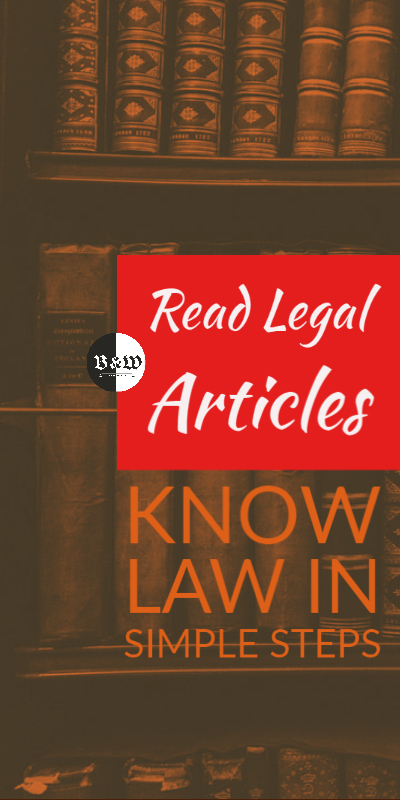How Do I Remove My Name From Wilful Defaulter List | मैं विलफुल डिफॉल्टर सूची से अपना नाम कैसे हटाऊं
A willful defaulter is a legal entity who has not repaid the loan amount despite its financial ability of repaying. Being a serious nature crime involving banking fraud, it causes mounting NPAs on banks.
|
Who is a ‘Willful Defaulter’ |
संक्षेप में, विलफुल डिफ़ॉल्ट एक बैंकिंग धोखाधड़ी है बैंक और / या वित्तीय संस्थान से उधारकर्ता द्वारा लिए गए ऋण को चुकाने में विफलता
• एक विलफुल डिफॉल्टर कानूनी इकाई है जिसने वित्तीय क्षमता के बावजूद ऋण राशि नहीं चुकाई है। |
उन विशेष उद्देश्यों के लिए ऋणदाता से वित्त का उपयोग नहीं किया गया है जिसके लिए वित्त का लाभ उठाया गया था या उसने धनराशि को छीना है।
|
|
RBI’s Definition of ‘Willful Defaulter’ |
|
Definition of willful default
(a) The unit has defaulted in meeting its payment / repayment obligations to the lender even when it has the capacity to honor the said obligations. (b) The unit has defaulted in meeting its payment / repayment obligations to the lender and has not utilized the finance from the lender for the specific purposes for which finance was availed of but has diverted the funds for other purposes. (c) The unit has defaulted in meeting its payment / repayment obligations to the lender and has siphoned off the funds so that the funds have not been utilized for the specific purpose for which finance was availed of, nor are the funds available with the unit in the form of other assets. (d) The unit has defaulted in meeting its payment / repayment obligations to the lender and has also disposed off or removed the movable fixed assets or immovable property given by him or it for the purpose of securing a term loan without the knowledge of the bank/lender. |
|
RBI’s Definition of ‘Willful Default’ by Diversion or Siphoning the Funds |
|
Diversion of funds, may include any one of the undernoted occurrences:
(a) utilization of short-term working capital funds for long-term purposes not in conformity with the terms of sanction.
(b) deploying borrowed funds for purposes / activities or creation of assets other than those for which the loan was sanctioned.
(c) transferring borrowed funds to the subsidiaries / Group companies or other corporates by whatever modalities.
(d) routing of funds through any bank other than the lender bank or members of consortium without prior permission of the lender.
(e) investment in other companies by way of acquiring equities / debt instruments without approval of lenders.
(f) shortfall in deployment of funds vis-à-vis the amounts disbursed / drawn and the difference not being accounted for. |
|
Siphoning of funds, refers to the below actions:
|
|
Factor Effecting the Identification of Willful Default
|
Penal Measures & Criminal Procedure for ‘Willful Default’
|
Penal Measures to Prevent Willful Defaulters to Access Capital Market |
|
Penal actions include sending of a list of willful defaulters (suit filed accounts) to SEBI by RBI and Credit Information Bureau (India) Ltd. (CIBIL) respectively.
|
|
RBI guidelines to banks to undertake following measures for Willful Defaulters
a) No additional facilities should be granted by any bank / FI to the listed willful defaulters.
b) The legal process, wherever warranted, against the borrowers / guarantors and foreclosure of recovery of dues
c) Wherever possible, the banks and FIs should adopt a proactive approach for a change of management of the willfully
d) A covenant in the loan agreements with the companies in which the banks/FIs have significant stake,
|
Criminal Actions against Willful Defaulter
|
JPC Recommendation |
|
RBI in consultation with Standing Technical Advisory Committee on Financial Regulations, on the need of initiating criminal action against concerned borrowers are : |
|
|
Criminal Actions by Banks |
|
Even under the existing legislation, there is ample scope of initiating criminal law procedures against willful defaulter, depending upon the facts and circumstances |
|
|
RBI’ caution: It should also be ensured that the penal provisions are used effectively and determinedly but after careful consideration and due caution. Towards this end, banks / FIs are advised to put in place a transparent mechanism, with the approval of their Board, for initiating criminal proceedings based on the facts of individual case. |
Our Analysis of Legal Initiatives on Willful Default
|
Supreme Court’s Keynote Action on “Siphoning Off Funds” – Considering it as Serious Fraud |
|
|
Calcutta High court Keynote Action: Below is a keynote action taken by Hon’ble High Court that can act as a major reference as a legal deterrent for siphoning off the money. It’s a major legal recourse in preventing willful default . |
|
In the case of Indranil Mukherjee v. Jayeeta Mukherjee & Ors.6, the Calcutta High Court demonstrated that the court has power to pass an injunction order and thereby restraining the defendants from withdrawing and/or siphoning any amount of money lying in the various deposits of different descriptions either in the joint name of the plaintiff and his wife (defendant) or from withdrawing any money lying in the fixed deposit or savings bank account in the name of the defendant alone. |
Our Analysis of Consequences of Willful Default
|
Consequences to be Faced by an Individual or Company on Being Declared a Willful Defaulter |
|
|
Lawyer Assistance |
|
|
|||||||||||||||||||||||||||||||||||||||||||||||||||||||||||||||||||||||||||||||||||||||||||||||||||||||||||||||||||||||||||||||||||||||||||||||||||||||||||||||||||||||||||||||||||||||||||||||||||||||||||||||||||||||||||||||||||||||||||||||||||





